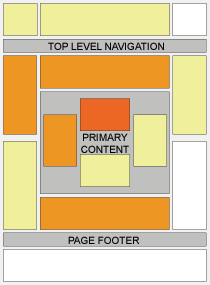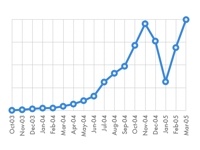A
stock market is a
market for the
trading of
company stock, and
derivatives of same; both of these are
securities listed on a
stock exchange as well as those only traded privately.
The Definition
The term 'the stock market' is a concept for the mechanism that enables the trading of company stocks (collective shares), other securities, and derivatives. Bonds are still traditionally traded in an informal, over-the-counter market known as the bond market. Commodities are traded in commodities markets, and derivatives are traded in a variety of markets (but, like bonds, mostly 'over-the-counter').
The size of the worldwide 'bond market' is estimated at $45 trillion. The size of the 'stock market' is estimated at about $51 trillion. The world derivatives market has been estimated at about $300 trillion.[1] The major U.S. Banks alone are said to account for about $100 trillion. It must be noted though that the derivatives market, because it is stated in terms of notional outstanding amounts, cannot be directly compared to a stock or fixed income market, which refers to actual value.
The stocks are listed and traded on stock exchanges which are entities (a corporation or mutual organization) specialized in the business of bringing buyers and sellers of stocks and securities together. The stock market in the United States includes the trading of all securities listed on the NYSE, the NASDAQ, the Amex, as well as on the many regional exchanges, the OTCBB, and Pink Sheets. European examples of stock exchanges include the Paris Bourse (now part of Euronext), the London Stock Exchange and the Deutsche Börse.
Trading
Participants in the stock market range from small individual stock investors to large hedge fund traders, who can be based anywhere. Their orders usually end up with a professional at a stock exchange, who executes the order.
Some exchanges are physical locations where transactions are carried out on a trading floor, by a method known as open outcry. This type of auction is used in stock exchanges and commodity exchanges where traders may enter "verbal" bids and offers simultaneously. The other type of exchange is a virtual kind, composed of a network of computers where trades are made electronically via traders at computer terminals.
Actual trades are based on an auction market paradigm where a potential buyer bids a specific price for a stock and a potential seller asks a specific price for the stock. (Buying or selling at market means you will accept any bid price or ask price for the stock.) When the bid and ask prices match, a sale takes place on a first come first served basis if there are multiple bidders or askers at a given price.
The purpose of a stock exchange is to facilitate the exchange of securities between buyers and sellers, thus providing a marketplace (virtual or real). The exchanges provide real-time trading information on the listed securities, facilitating price discovery.
The New York Stock Exchange is a physical exchange. This is also referred to as a "listed" exchange (because only stocks listed with the exchange may be traded). Orders enter by way of brokerage firms that are members of the exchange and flow down to floor brokers who go to a specific spot on the floor where the stock trades. At this location, known as the trading post, there is a specific person known as the specialist whose job is to match buy orders and sell orders. Prices are determined using an auction method known as "open outcry": the current bid price is the highest amount any buyer is willing to pay and the current ask price is the lowest price at which someone is willing to sell; if there is a spread, no trade takes place. For a trade to take place, there must be a matching bid and ask price. (If a spread exists, the specialist is supposed to use his own resources of money or stock to close the difference, after some time.) Once a trade has been made, the details are reported on the "tape" and sent back to the brokerage firm, who then notifies the investor who placed the order. Although there is a significant amount of direct human contact in this process, computers do play a huge role in the process, especially for so-called "program trading".
The Nasdaq is a virtual (listed) exchange, where all of the trading is done over a computer network. The process is similar to the above, in that the seller provides an asking price and the buyer provides a bidding price. However, buyers and sellers are electronically matched. One or more Nasdaq market makers will always provide a bid and ask price at which they will always purchase or sell 'their' stock.[2].
The Paris Bourse, now part of Euronext is an order-driven, electronic stock exchange. It was automated in the late 1980s. Before, it consisted of an open outcry exchange. Stockbrokers met in the trading floor or the Palais Brongniart. In 1986, the CATS trading system was introduced, and the order matching process was fully automated.
From time to time, active trading (especially in large blocks of securities) have moved away from the 'active' exchanges. Securities firms, led by UBS AG, Goldman Sachs Group Inc. and Credit Suisse Group, already steer 12 percent of U.S. security trades away from the exchanges to their internal systems. That share probably will increase to 18 percent by 2010 as more investment banks bypass the NYSE and Nasdaq and pair buyers and sellers of securities themselves, according to data compiled by Boston-based Aite Group LLC, a brokerage-industry consultant.
Now that computers have eliminated the need for trading floors like the Big Board's, the balance of power in equity markets is shifting. By bringing more orders in-house, where clients can move big blocks of stock anonymously, brokers pay the exchanges less in fees and capture a bigger share of the $11 billion a year that institutional investors pay in trading commissions.
Market participants
Many years ago, worldwide, buyers and sellers were individual investors, such as wealthy businessmen, with long family histories (and emotional ties) to particular corporations. Over time, markets have become more "institutionalized"; buyers and sellers are largely institutions (e.g., pension funds, insurance companies, mutual funds, hedge funds, investor groups, and banks). The rise of the institutional investor has brought with it some improvements in market operations. Thus, the government was responsible for "fixed" (and exorbitant) fees being markedly reduced for the 'small' investor, but only after the large institutions had managed to break the brokers' solid front on fees (they then went to 'negotiated' fees, but only for large institutions).
However, corporate governance (at least in the West) has been greatly affected by the rise of institutional 'owners.'
History
Braudel suggests that in Cairo in the 11th century Muslim and Jewish merchants had already set up every form of trade association and had knowledge of every method of credit and payment, disproving the belief that these were invented later by Italians. In 12th century France the courratiers de change were concerned with managing and regulating the debts of agricultural communities on behalf of the banks. Because these men also traded with debts, they could be called the first brokers. In late 13th century Bruges commodity traders gathered inside the house of a man called Van der Beurse, and in 1309 they became the "Brugse Beurse", instituionalizing what had been, until then, an informal meeting. The idea quickly spread around Flanders and neighboring counties and "Beurzen" soon opened in Ghent and Amsterdam.
In the middle of the 13th century Venetian bankers began to trade in government securities. In 1351 the Venetian government outlawed spreading rumors intended to lower the price of government funds. Bankers in Pisa, Verona, Genoa and Florence also began trading in government securities during the 14th century. This was only possible because these were independent city states not ruled by a duke but a council of influential citizens. The Dutch later started joint stock companies, which let shareholders invest in business ventures and get a share of their profits - or losses. In 1602, the Dutch East India Company issued the first shares on the Amsterdam Stock Exchange. It was the first company to issue stocks and bonds.
The Amsterdam Stock Exchange (or Amsterdam Beurs) is also said to have been the first stock exchange to introduce continuous trade in the early 17th century. The Dutch "pioneered short selling, option trading, debt-equity swaps, merchant banking, unit trusts and other speculative instruments, much as we know them" (Murray Sayle, "Japan Goes Dutch", London Review of Books XXIII.7, April 5, 2001). There are now stock markets in virtually every developed and most developing economies, with the world's biggest markets being in the United States, Canada, China (Hongkong), India, UK, Germany, France and Japan.
Importance of stock market
Function and purpose
The stock market is one of the most important sources for companies to raise money. This allows businesses to go public, or raise additional capital for expansion. The liquidity that an exchange provides affords investors the ability to quickly and easily sell securities. This is an attractive feature of investing in stocks, compared to other less liquid investments such as real estate.
History has shown that the price of shares and other assets is an important part of the dynamics of economic activity, and can influence or be an indicator of social mood. Rising share prices, for instance, tend to be associated with increased business investment and vice versa. Share prices also affect the wealth of households and their consumption. Therefore, central banks tend to keep an eye on the control and behavior of the stock market and, in general, on the smooth operation of financial system functions. Financial stability is the raison d'être of central banks.
Exchanges also act as the clearinghouse for each transaction, meaning that they collect and deliver the shares, and guarantee payment to the seller of a security. This eliminates the risk to an individual buyer or seller that the counterparty could default on the transaction.
The smooth functioning of all these activities facilitates economic growth in that lower costs and enterprise risks promote the production of goods and services as well as employment. In this way the financial system contributes to increased prosperity.
Relation of the stock market to the modern financial system
The financial system in most western countries has undergone a remarkable transformation. One feature of this development is disintermediation. A portion of the funds involved in saving and financing flows directly to the financial markets instead of being routed via banks' traditional lending and deposit operations. The general public's heightened interest in investing in the stock market, either directly or through mutual funds, has been an important component of this process. Statistics show that in recent decades shares have made up an increasingly large proportion of households' financial assets in many countries. In the 1970s, in Sweden, deposit accounts and other very liquid assets with little risk made up almost 60 per cent of households' financial wealth, compared to less than 20 per cent in the 2000s. The major part of this adjustment in financial portfolios has gone directly to shares but a good deal now takes the form of various kinds of institutional investment for groups of individuals, e.g., pension funds, mutual funds, hedge funds, insurance investment of premiums, etc. The trend towards forms of saving with a higher risk has been accentuated by new rules for most funds and insurance, permitting a higher proportion of shares to bonds. Similar tendencies are to be found in other industrialized countries. In all developed economic systems, such as the European Union, the United States, Japan and other developed nations, the trend has been the same: saving has moved away from traditional (government insured) bank deposits to more risky securities of one sort or another.
The stock market, individual investors, and financial risk
Riskier long-term saving requires that an individual possess the ability to manage the associated increased risks. Stock prices fluctuate widely, in marked contrast to the stability of (government insured) bank deposits or bonds. This is something that could affect not only the individual investor or household, but also the economy on a large scale. The following deals with some of the risks of the financial sector in general and the stock market in particular. This is certainly more important now that so many newcomers have entered the stock market, or have acquired other 'risky' investments (such as 'investment' property, i.e., real estate and collectables).
With each passing year, the noise level in the stock market rises. Television commentators, financial writers, analysts, and market strategists are all overtalking each other to get investors' attention. At the same time, individual investors, immersed in chat rooms and message boards, are exchanging questionable and often misleading tips. Yet, despite all this available information, investors find it increasingly difficult to profit. Stock prices skyrocket with little reason, then plummet just as quickly, and people who have turned to investing for their children's education and their own retirement become frightened. Sometimes there appears to be no rhyme or reason to the market, only folly.
This is a quote from the preface to a published biography about the well-known and long term value oriented stock investor Warren Buffett.[1] Buffett began his career with only 100 U.S. dollars and has over the years built himself a multibillion-dollar fortune. The quote illustrates some of what has been happening in the stock market during the end of the 20th century and the beginning of the 21st.
The behavior of the stock market
From experience we know that investors may temporarily pull financial prices away from their long term trend level. Over-reactions may occur— so that excessive optimism (euphoria) may drive prices unduly high or excessive pessimism may drive prices unduly low. New theoretical and empirical arguments have been put forward against the notion that financial markets are efficient.
According to the efficient market hypothesis (EMH), only changes in fundamental factors, such as profits or dividends, ought to affect share prices. (But this largely theoretic academic viewpoint also predicts that little or no trading should take place— contrary to fact— since prices are already at or near equilibrium, having priced in all public knowledge.) But the efficient-market hypothesis is sorely tested by such events as the stock market crash in 1987, when the Dow Jones index plummeted 22.6 percent — the largest-ever one-day fall in the United States. This event demonstrated that share prices can fall dramatically even though, to this day, it is impossible to fix a definite cause: a thorough search failed to detect any specific or unexpected development that might account for the crash. It also seems to be the case more generally that many price movements are not occasioned by new information; a study of the fifty largest one-day share price movements in the United States in the post-war period confirms this.[2] Moreover, while the EMH predicts that all price movement (in the absence of change in fundamental information) is random (i.e., non-trending), many studies have shown a marked tendency for the stock market to trend over time periods of weeks or longer.
Various explanations for large price movements have been promulgated. For instance, some research has shown that changes in estimated risk, and the use of certain strategies, such as stop-loss limits and Value at Risk limits, theoretically could cause financial markets to overreact.
Other research has shown that psychological factors may result in exaggerated stock price movements. Psychological research has demonstrated that people are predisposed to 'seeing' patterns, and often will perceive a pattern in what is, in fact, just noise. (Something like seeing familiar shapes in clouds or ink blots.) In the present context this means that a succession of good news items about a company may lead investors to overreact positively (unjustifiably driving the price up). A period of good returns also boosts the investor's self-confidence, reducing his (psychological) risk threshold.[3]
Another phenomenon— also from psychology— that works against an objective assessment is group thinking. As social animals, it is not easy to stick to an opinion that differs markedly from that of a majority of the group. An example with which one may be familiar is the reluctance to enter a restaurant that is empty; people generally prefer to have their opinion validated by those of others in the group.
In one paper the authors draw an analogy with gambling.[4] In normal times the market behaves like a game of roulette; the probabilities are known and largely independent of the investment decisions of the different players. In times of market stress, however, the game becomes more like poker (herding behavior takes over). The players now must give heavy weight to the psychology of other investors and how they are likely to react psychologically.
The stock market, as any other business, is quite unforgiving of amateurs. Inexperienced investors rarely get the assistance and support they need. In the period running up to the recent Nasdaq crash, less than 1 per cent of the analyst's recommendations had been to sell (and even during the 2000 - 2002 crash, the average did not rise above 5%). The media amplified the general euphoria, with reports of rapidly rising share prices and the notion that large sums of money could be quickly earned in the so-called new economy stock market. (And later amplified the gloom which descended during the 2000 - 2002 crash, so that by summer of 2002, predictions of a DOW average below 5000 were quite common.)
Irrational behavior
Sometimes the market tends to react irrationally to economic news, even if that news has no real effect on the technical value of securities itself. Therefore, the stock market can be swayed tremendously in either direction by press releases, rumors and mass panic.
Furthermore, the stock market comprises a large amount of speculative analysts, or pencil pushers, who have no substantial money or financial interest in the market, but make market predictions and suggestions regardless. Over the short-term, stocks and other securities can be battered or buoyed by any number of fast market-changing events, making the stock market difficult to predict.
Stock market index
-
The movements of the prices in a market or section of a market are captured in price indices called stock market indices, of which there are many, e.g., the S&P, the FTSE and the Euronext indices. Such indices are usually market capitalization (the total market value of floating capital of the company) weighted, with the weights reflecting the contribution of the stock to the index. The constituents of the index are reviewed frequently to include/exclude stocks in order to reflect the changing business environment.
Derivative instruments
-
Financial innovation has brought many new financial instruments whose pay-offs or values depend on the prices of stocks. Some examples are exchange traded funds (ETFs), stock index and stock options, equity swaps, single-stock futures, and stock index futures. These last two may be traded on futures exchanges (which are distinct from stock exchanges—their history traces back to commodities futures exchanges), or traded over-the-counter. As all of these products are only derived from stocks, they are sometimes considered to be traded in a (hypothetical) derivatives market, rather than the (hypothetical) stock market.
Leveraged Strategies
Stock that a trader does not actually own may be traded using short selling; margin buying may be used to purchase stock with borrowed funds; or, derivatives may be used to control large blocks of stocks for a much smaller amount of money than would be required by outright purchase or sale.
Short selling
-
In short selling, the trader borrows stock (usually from his brokerage which holds its clients' shares or its own shares on account to lend to short sellers) then sells it on the market, hoping for the price to fall. The trader eventually buys back the stock, making money if the price fell in the meantime or losing money if it rose. Exiting a short position by buying back the stock is called "covering a short position." This strategy may also be used by unscrupulous traders to artificially lower the price of a stock. Hence most markets either prevent short selling or place restrictions on when and how a short sale can occur. The practice of naked shorting is illegal in most (but not all) stock markets.
Margin buying
- Main article: margin buying
In margin buying, the trader borrows money (at interest) to buy a stock and hopes for it to rise. Most industrialized countries have regulations that require that if the borrowing is based on collateral from other stocks the trader owns outright, it can be a maximum of a certain percentage of those other stocks' value. In the United States, the margin requirements have been 50% for many years (that is, if you want to make a $1000 investment, you need to put up $500, and there is often a maintenance margin below the $500). A margin call is made if the total value of the investor's account cannot support the loss of the trade. (Upon a decline in the value of the margined securities additional funds may be required to maintain the account's equity, and with or without notice the margined security or any others within the account may be sold by the brokerage to protect its loan position. The investor is responsible for any shortfall following such forced sales.) Regulation of margin requirements (by the Federal Reserve) was implemented after the Crash of 1929. Before that, speculators typically only needed to put up as little as 10 percent (or even less) of the total investment represented by the stocks purchased. Other rules may include the prohibition of free-riding: putting in an order to buy stocks without paying initially (there is normally a three-day grace period for delivery of the stock), but then selling them (before the three-days are up) and using part of the proceeds to make the original payment (assuming that the value of the stocks has not declined in the interim).
New issuance
-
Global issuance of equity and equity-related instruments totaled $505 billion in 2004, a 29.8% increase over the $389 billion raised in 2003. Initial public offerings (IPOs) by US issuers increased 221% with 233 offerings that raised $45 billion, and IPOs in Europe, Middle East and Africa (EMEA) increased by 333%, from $ 9 billion to $39 billion.
Investment strategies
-
One of the many things people always want to know about the stock market is, "How do I make money investing?" There are many different approaches; two basic methods are classified as either fundamental analysis or technical analysis. Fundamental analysis refers to analyzing companies by their financial statements found in SEC Filings, business trends, general economic conditions, etc. Technical analysis studies price actions in markets through the use of charts and quantitative techniques to attempt to forecast price trends regardless of the company's financial prospects. One example of a technical strategy is the Trend following method, used by John W. Henry and Ed Seykota, which uses price patterns, utilizes strict money management and is also rooted in risk control and diversification.
Additionally, many choose to invest via the index method. In this method, one holds a weighted or unweighted portfolio consisting of the entire stock market or some segment of the stock market (such as the S&P 500 or Wilshire 5000). The principal aim of this strategy is to maximize diversification, minimize taxes from too frequent trading, and ride the general trend of the stock market (which, in the U.S., has averaged nearly 10%/year, compounded annually, since World War II).
Finally, one may trade based on inside information, which is known as insider trading.




















